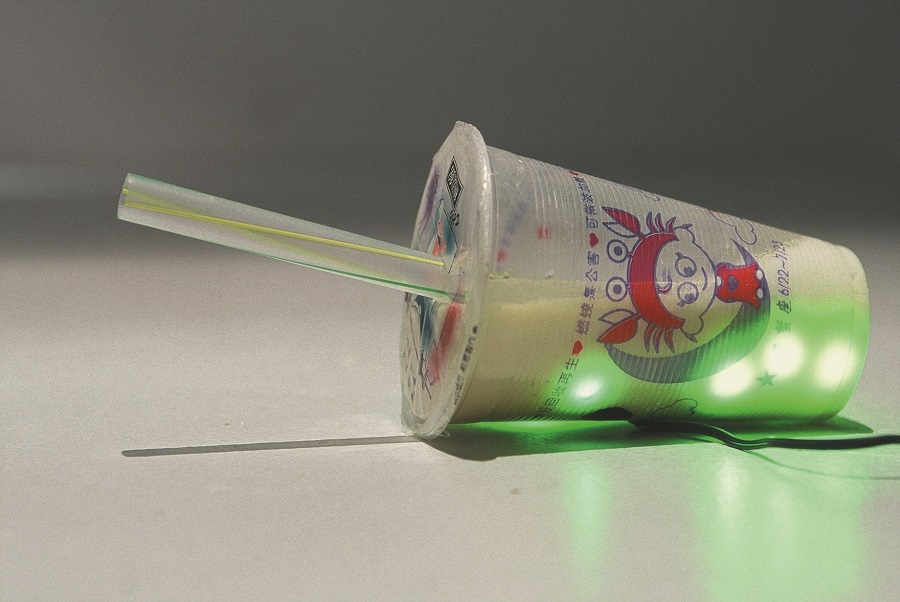'Within my work' says Best, 'I draw specific influence from the narrative strategies of video games, news/fashion photography and film.'
Andrew Best
Born 1975, Adelaide, South Australia
Exemplifying urban, deadpan cool, Andrew Best's multi–disciplinary practice encompasses sculpture, installation, photo–media and painting. Excavating contemporary culture – fashion, video games, film, nature documentaries and pop – as well as the urban landscape, he displaces 'everyday elements into fantastical scenarios or into "atoms" of new stories...' These vaguely sinister reconfigurations of the physical and cultural environment contain elements of the fantastic, the occult and the merely strange (Zombie Gang Member 3, Akira Tamura, 2004).
The imposingly large and critically well-received Pauline (2004) – selected for the survey exhibition 2004: Australian Culture Now at the National Gallery of Victoria – was a three–dimensional realisation of the 1980s video game Donkey Kong, from which Best had removed any identifying figures. Given that he cites as a point of reference the writer/filmmaker Alain Robbe-Grillet – whose nouveaux romans challenged conventional narrative structures, dispensing with plot, character, setting, linear time etc – it is not at all surprising that Best's enigmatic narratives are invariably open–ended.
Alluding to the flawed paradise of Adelaide – a city memorably described by Salman Rushdie as a perfect setting for a Stephen King novel or horror film – in Paradise (2003) he constructed a cryptic crime–scene like tableau from an illuminated drink container, a pair of photocopy machines, pot plants, a macabre face mask, a scattering of capsules of nitrous oxide and realistic latex weeds that sprouted from cracks in the floor.
'Within my work' says Best, 'I draw specific influence from the narrative strategies of video games, news/fashion photography and film.' Accordingly, the unnamed automaton–like protagonists, temporal discontinuity, and ambiguity of identity and setting of Last Year at Marienbad (1961) – written by Robbe–Grillet and directed by Alan Resnais – may well have supplied Best with a strategic model, wherein the viewer is obliged to complete the narrative. Death too, takes on the surreal quality of a video game in the photographic series Knox Element (Fall Series) 2004, as inner–city youths, apparently falling 'happily, languidly to their death' are captured in the penultimate frozen moment of the photographic image – another kind of death – efore they touch the ground.
Wendy Walker from her Samstag catalogue essay, The memorable: ephemeral
2006 Anne & Gordon Samstag International Visual Arts Scholarship
2006 MA in Fine Art, Chelsea College of Art & Design, London, UK
2004 Master of Visual Art, University of South Australia, Adelaide
2001 Bachelor of Visual Arts – Honours 1st Class, University of South Australia, Adelaide
Artist's website
andybest.org

